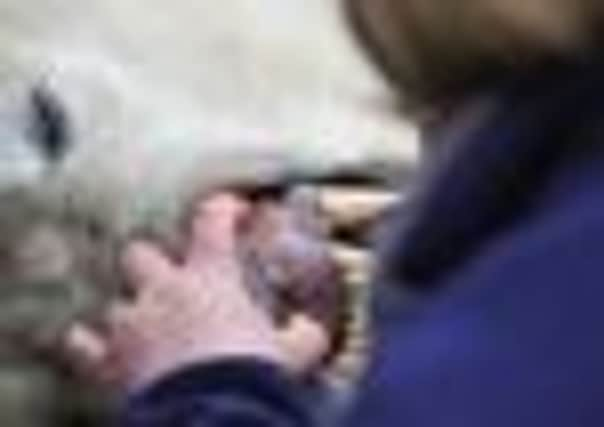Root canal surgery to restore polar bear’s bite


Luckily for Arktos, the polar bear and star attraction at the Highland Wildlife Park, his toothache was spotted early when keepers noticed the usually playful bear appeared down in the mouth.
Broken or infected teeth are a common cause of death among polar bears in the wild. But the best dental care was on hand for Arktos from a team of vets from the Royal Zoological Society of Scotland who travelled to Kingussie to administer treatment to a discoloured upper left canine tooth.
Advertisement
Hide AdAdvertisement
Hide AdThe four-year-old, who along with his companion Walker is one of only two polar bears in captivity in the UK, received a tranquiliser dart before he was settled into the large carnivore’s equivalent of the dentist’s chair - a specially reinforced table made from scaffolding poles and planks.
It took 12 people to lift Arktos onto the table - two dentists, two radiographers, two veterinarians, one vet nurse and three senior animal staff.
Once inside Arktos’s cavernous mouth vets assessed the damage and decided he needed a root canal. Surgery on the tooth, which was damaged at the tip and rotted, took three hours including clearing out the infected tissue and packing the tooth with dental cement.
Douglas Richardson, Animal Collection Manager at the Highland Wildlife Park, said: “Because we regularly train our polar bears and other large animals to take part in regular health checks, this means that we can spot issues like this before they become a problem and give our animals the best possible care available.
“Arktos really is a lucky bear and we were delighted to be able to save his tooth.
“In the wild the infection would have tracked through his system, causing him a great deal of pain and discomfort and, over the longer term, it could eventually kill him.”
Mr Richardson said that although the dental work was very similar to that carried out on people, the operation was complicated by the size of a polar bear’s mouth and the 42 razor sharp teeth inside. A polar bear’s canine teeth are longer and sharper than any other bears.
“As far as we can tell, the operation was a success. It took three hours in total and Arktos just took 20 minutes to come round,” he said.
Advertisement
Hide AdAdvertisement
Hide Ad“He was then up on his feet, although still a bit wobbly. He quickly had a drink and we expect him to start eating again this morning, when we will try him on some of his favourite soft foods as his mouth will still be a bit sore.
“Arktos spent the night in a small holding area and then should be reunited with Walker later today.”
Last year the park’s other polar bear, Walker, also underwent dental treatment when he had to have a damanged tooth removed.